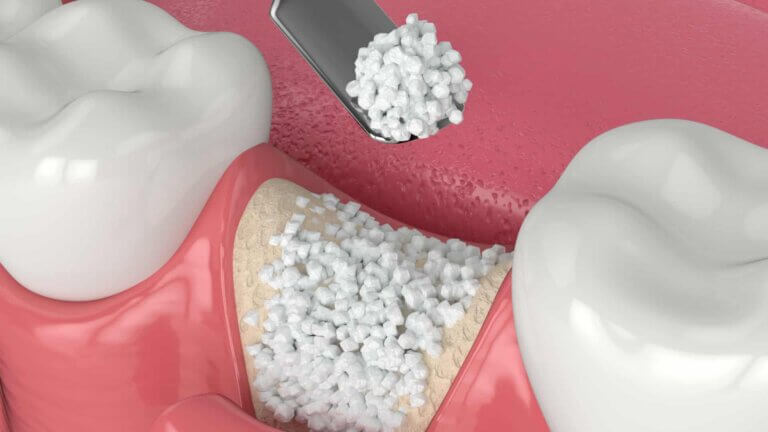Bone Graft Pre-Operative Instructions

A Bone Graft procedure is often needed after a tooth extraction to preserve the alveolar bone for future dental implants. To ensure your procedure goes smoothly, follow these pre-operative instructions.
Plan Your Meals
After your bone graft surgery, you’ll be placed on a soft food diet to aid healing. Prepare soft foods in advance, like:
- Scrambled eggs
- Mashed potatoes
- Smoothies
- Yogurt
- Soft rice
- Porridge or congee
On the day of your surgery, eat breakfast and lunch as usual unless you’re taking sedatives (more on this below). Avoid chewing on the side of the affected tooth.
Take Your Antibiotics
Your dentist will provide a prescription for antibiotics before your appointment. Take them as directed to help prevent infection and ensure a smooth healing process.
Medications
Continue taking your regular medications unless your dentist advises otherwise. Inform your dentist if there have been any recent changes to your health or prescriptions, particularly if you’re taking blood thinners, such as:
- Warfarin (Coumadin)
- Dabigatran (Pradaxa)
- Rivaroxaban (Xarelto)
Your dentist may ask you to temporarily stop or adjust these medications before the surgery. Ensure you have pain relievers, like acetaminophen (Tylenol) and ibuprofen (Advil), ready for use after the procedure.
Pain Management
To manage pain after surgery, purchase over-the-counter pain relievers ahead of your appointment. A potent combination includes 1000mg acetaminophen (Tylenol) taken with 600mg ibuprofen (Advil). Take these every 4-6 hours as needed, unless otherwise directed by your dentist.
Sedative Medications
If you’re scheduled for oral sedation during your procedure, follow your dentist’s instructions closely. Do not eat or drink after midnight if you’re having oral conscious sedation, and arrange for someone to drive you home.
Oral Hygiene
Maintaining good oral hygiene before your surgery helps reduce the risk of infection. Follow these steps:
- Brush Twice a Day: Brush after meals to keep your teeth clean.
- Rinse When You Can’t Brush: If you’re unable to brush, rinse your mouth with water or an antibacterial mouthwash like Crest Gum Care.
- Upgrade Your Toothbrush: A soft-bristled toothbrush like the Curaprox CS5460 Ultra Soft or an electric toothbrush, such as the Philips Sonicare ProtectiveClean 6100, can help you achieve a deeper clean.
- Floss Daily: Use traditional floss (GUM ButlerWeave), flossers, or interdental brushes (GUM Proxabrush) to remove plaque between your teeth.
- Consider a Water Flosser: A Waterpik Aquarius Water Flosser can help flush out debris missed by regular flossing. Use it daily to maintain optimal gum health.
- Choose a Gum Care Toothpaste: Opt for a toothpaste that supports gum health, such as Crest Pro Health Gum Detoxify Deep Clean Toothpaste.
Comfortable Clothing
Wear loose, comfortable clothing to your appointment. Opt for darker colors to avoid visible stains, and skip makeup, high heels, and jewelry. Remove contact lenses and any facial piercings (tongue, lip, or nose) before your surgery.
Plan for Time Off Work
Arrange to take 1-2 days off work to recover. Your dentist can provide a sick note if needed. If you have children, consider organizing childcare for the day of the surgery.
Review Post-Operative Instructions
Be sure to read the post-operative instructions provided by your dentist. Knowing what to do after surgery is essential for a successful recovery.
Have Questions?
If you have any concerns or questions before your bone graft procedure, don’t hesitate to contact our office. We’re here to help ensure a smooth experience from start to finish.

